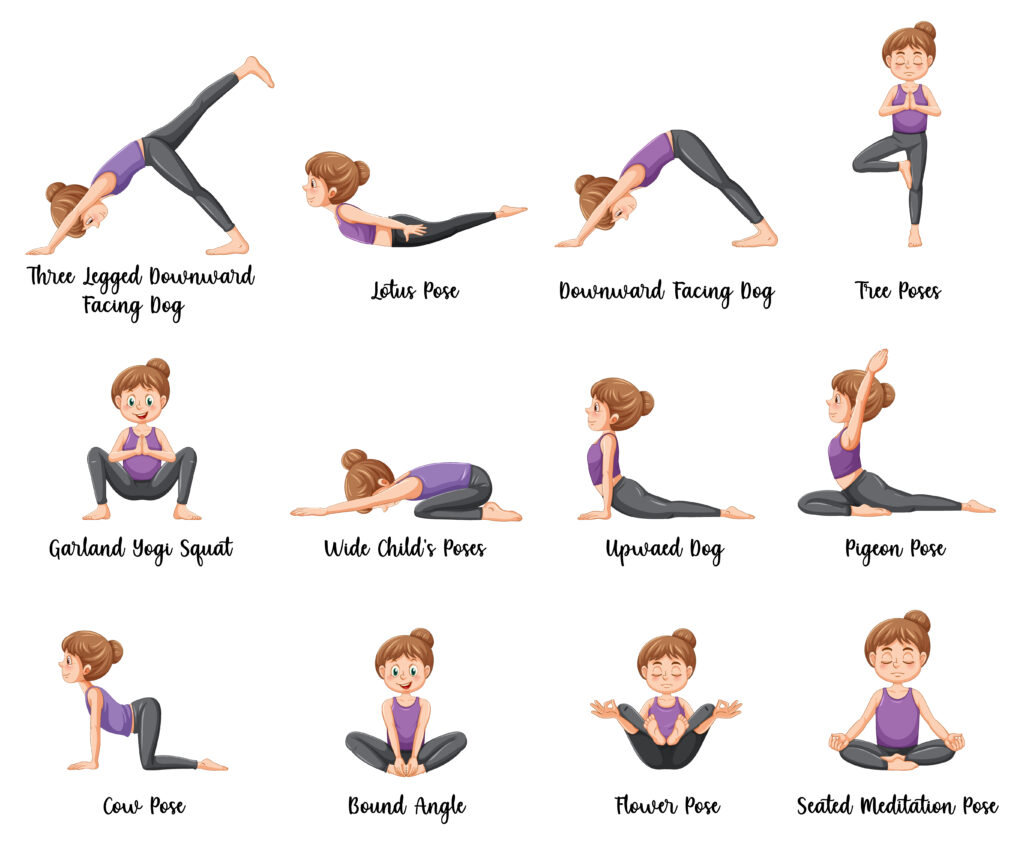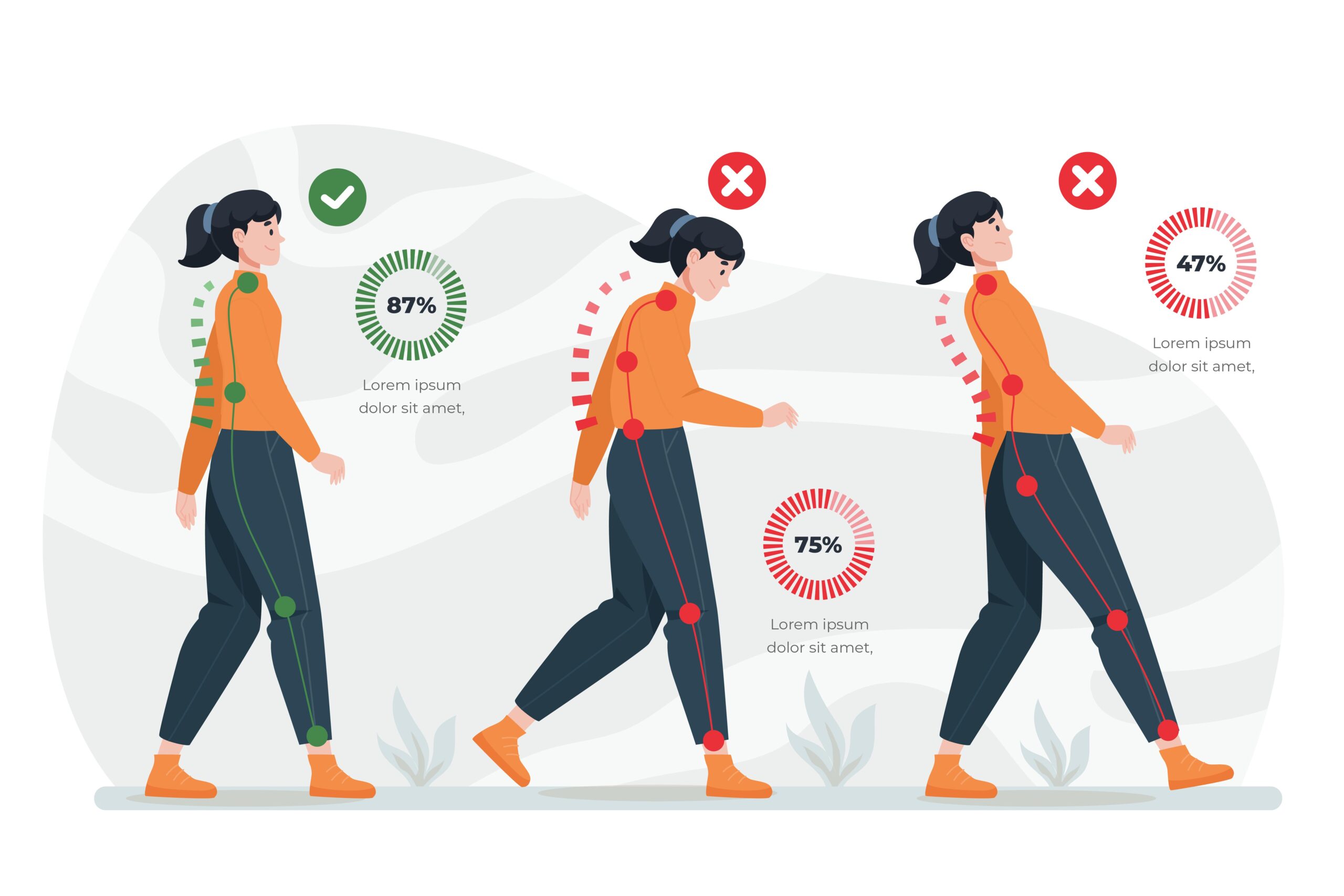In our fast-paced and digitally connected world, maintaining good posture is often easier said than done. Whether we’re hunched over our computers for hours or glued to our smartphones, poor posture can become a daily habit, leading to various health issues. However, there’s a simple yet effective solution that can transform your life – the posture corrector. In this comprehensive article, we will explore the importance of good posture, the health implications of poor posture, how a posture corrector can significantly impact your life, and special exercises to further improve your posture.
The Significance of Good Posture
Before we delve into the benefits of using a posture corrector and posture-enhancing exercises, let’s understand why good posture matters:
1. Spinal Health
Good posture ensures that your spine is correctly aligned. This alignment reduces the risk of spinal issues such as herniated discs, scoliosis, and chronic back pain. By maintaining proper posture, you’re taking proactive steps to safeguard your spinal health.
2. Improved Breathing
Proper posture allows your lungs to function optimally. When you slouch or hunch, your lung capacity decreases, potentially leading to shallow breathing and decreased oxygen intake. Good posture can lead to improved lung function and better overall health.
3. Confidence Boost
Maintaining good posture conveys confidence and self-assuredness. It can influence how others perceive you and, more importantly, how you perceive yourself. By standing tall and maintaining an upright posture, you radiate confidence and assertiveness.
4. Enhanced Digestion
Believe it or not, your posture can even affect your digestion. When you slouch, you may compress your digestive organs, potentially leading to issues like acid reflux and indigestion. Proper posture can help alleviate these problems.

The Health Implications of Poor Posture
Now that we understand the importance of good posture, let’s delve into the health issues that can arise from poor posture:
1. Back and Neck Pain
One of the most common consequences of poor posture is persistent back and neck pain. Slouching or sitting with a curved spine places excessive strain on the muscles and ligaments in these areas, leading to discomfort and potential chronic pain.
2. Headaches
Poor posture can contribute to tension headaches. When the muscles in your neck and shoulders are constantly tense due to bad posture, it can result in headaches and migraines.
3. Reduced Lung Function
As mentioned earlier, poor posture limits lung capacity, which can lead to reduced oxygen intake and potentially cause fatigue, dizziness, and shortness of breath.
4. Digestive Issues
Digestive problems, including acid reflux, indigestion, and constipation, can be aggravated by poor posture. An improperly positioned body can compress the digestive organs and hinder their functionality.
How a Posture Corrector Can Transform Your Life
Now, let’s explore the positive impact of incorporating a posture corrector into your daily routine:
1. Corrects Habits
A posture corrector gently reminds you to maintain good posture. By wearing it regularly, you can gradually correct poor posture habits and establish a healthier stance.
2. Relieves Pain
For those already experiencing back, neck, or shoulder pain, a posture corrector can provide relief by reducing the strain on these areas. It can help alleviate discomfort and prevent pain from worsening.
3. Enhanced Confidence
Wearing a posture corrector naturally encourages you to stand tall and exude confidence. Over time, you’ll notice an increase in your self-assuredness and assertiveness.
4. Improved Breathing
A posture corrector helps open up your chest and improve lung function. This leads to better breathing and overall enhanced well-being.

Posture-Enhancing Exercises
To further enhance your posture, consider incorporating the following exercises into your daily routine:
1. Wall Angels:
Stand with your back against a wall and slowly raise your arms to create “angel wings” without letting your back leave the wall. This exercise helps improve shoulder mobility and alignment.
2. Cat-Cow Stretch:
Get on your hands and knees and alternate between arching your back (the “cat” position) and extending it (the “cow” position). This exercise promotes flexibility in the spine and helps align it correctly.
3. Planks:
Strengthen your core muscles with planks. A strong core provides the necessary support for maintaining good posture.
4. Thoracic Extension:
Sit or stand with your back straight. Place your hands behind your head and gently arch your upper back. This exercise targets the thoracic spine, which is crucial for good posture.
Chiropractor-Approved Recommendations to Correct Bad Posture
Bad posture can lead to a wide range of health issues, from chronic pain to reduced lung function. Chiropractors are experts in spinal health and can provide valuable recommendations to help you correct bad posture and alleviate associated problems. In this article, we’ll explore some chiropractor-approved tips and strategies to improve your posture and overall well-being.
Understand the Impact of Bad Posture
Before we delve into the recommendations from chiropractors, it’s essential to understand how bad posture affects your body:
– Spinal Misalignment: Poor posture can lead to spinal misalignment, which is a common issue that chiropractors address. Misaligned vertebrae can cause discomfort and pain.
– Muscle Strain: Bad posture places unnecessary strain on your muscles, leading to chronic muscle pain and tension.
Chiropractor-Approved Recommendations
1. Chiropractic Assessment:
Start by consulting a chiropractor for a thorough evaluation of your posture and spinal health. They can identify specific issues and develop a personalized treatment plan.
2. Regular Chiropractic Adjustments:
Chiropractors perform adjustments to correct spinal misalignments. Regular sessions can help you maintain proper alignment and alleviate pain.
3. Ergonomic Workspace:
If you spend long hours working at a desk or using a computer, ensure your workspace is ergonomic. Your chiropractor can provide guidance on the ideal desk setup and chair height to promote good posture.
4. Stretching and Strengthening Exercises:
Chiropractors often recommend specific exercises to improve posture. These exercises can help strengthen the core, improve flexibility, and correct muscle imbalances.

5. Posture Corrector:
Consider using a posture corrector as mentioned in the previous article. These devices can serve as a reminder to maintain proper posture throughout the day.
6. Mindful Posture Awareness:
Chiropractors stress the importance of being mindful of your posture. Regularly check in with your body to ensure you’re maintaining good posture, whether sitting, standing, or walking.
7. Sleeping Position:
Your sleeping position can also impact your posture. Chiropractors may recommend sleeping on your back or side with proper pillow support to maintain spinal alignment.
8. Footwear:
The type of footwear you choose can affect your posture. Chiropractors often advise wearing supportive shoes that promote proper alignment.
9. Stay Active:
Regular physical activity and exercise can help improve posture by strengthening muscles and promoting flexibility. Consult your chiropractor for exercise recommendations tailored to your needs.
10. Stay Hydrated:
Chiropractors emphasize the importance of staying hydrated to maintain spinal disc health. Proper hydration supports the shock-absorbing properties of spinal discs.
11. Maintain a Healthy Weight:
Excess weight can strain your spine and affect your posture. Chiropractors may recommend a healthy diet and exercise to help you maintain a healthy weight.
12. Stress Management:
Stress can lead to tension in the neck and shoulders, affecting posture. Chiropractors often suggest stress-reduction techniques such as mindfulness, yoga, or meditation.
Chiropractors play a crucial role in helping individuals correct bad posture and alleviate the associated health issues. By following their recommendations, you can improve your posture, reduce pain, and enhance your overall well-being. Remember that consistency is key, and consulting a chiropractor is an excellent first step towards better posture and a healthier, pain-free life.
Conclusion
Maintaining good posture is not just a matter of aesthetics; it’s a vital aspect of your overall health and well-being. Poor posture can lead to a range of health issues, while a posture corrector and posture-enhancing exercises can help you address and rectify these concerns. By embracing good posture and integrating a quality posture corrector into your life, along with incorporating posture-enhancing exercises, you’ll experience a remarkable transformation in your physical health, confidence, and overall quality of life.
So, why wait? Boost your life with a posture corrector and these exercises, and start enjoying the benefits of better posture today. Your body will thank you for it.

